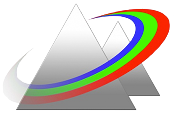Recent News
NQVL Design Phase Award
October 1, 2025
CHTM Joins NSF's NQVL Pilot Projects
August 9, 2024
OSE PHD, Dr. Xuefeng Li - Wins The Outstanding Interdisciplinary Graduate Programs Award
May 10, 2024
Dr. Ali Rastegari - 2024 OSE Best Dissertation Award Winner
May 10, 2024
News Archives
OSE Special Seminars
November 30, 2017 - CHTM

UNM's Optical Science and Engineering (OSE) Program has announced three special seminars during the Fall 2017 line up.
Friday, December 1, 2017
11:00AM - 12:00PM
CHTM, Room 101
Dr. John Perrault
Senior Optical Physicist
Google, Inc.
Title:
Optical Bandwidth of Virtual/Augmented Reality Displays
Abstract:
Human computer interaction has changed dramatically over the last few decades, from isolated desktop computers to smartphones with mobile computing and internet capability. Virtual (VR) and augmented reality (AR) display systems are a possible next step in the evolution of how we interface with computers, but face challenges in user adoption and comfort. The majority of existing VR/AR head-mounted display systems use a magnifier-based optical system to project images onto the retina. Computational, lightfield, holographic, and retinal scanners are emerging approaches that may provide a better user experience. These optical systems can be thought of as a channel for visual information, with an information capacity that can be used to uncover inherent capabilities and limitations. This talk will review these optical systems and discuss their performance tradeoffs.
Monday, December 4, 2017
10:00 AM - 11:00 AM
P&A, Room 190
Dr. Jani Oksanen
Aalto University in Finland
We study the physics and transport effects primarily related to electroluminescence, aiming to demonstrate and harness this effect in thermophotonic (TPX) heat pumps combining the EL cooling effect with energy recycling provided by photovoltaic cells. Our work focuses both on the experimental realization of TPX devices as well as on developing the models and modeling tools needed to understand the pertinent optical, electrical and thermal transport effects and related interactions.
In this seminar, I will give an overview of our progress and the challenges related with optical cooling, as well as discuss the selected most important physical effects and models needed to understand the phenomena in more detail. This includes topics ranging from fluctuational electrodynamics and charge transport modeling to experimental work involving growth, processing, and characterization of conventional compound semiconductors and devices. In addition, I will also discuss some of our recent results related to the diffusion-driven charge transport, which started out as a possible means to reduce the resistive losses in large area LEDs to the level allowing the realization of large area TPX devices and may also find use e.g. in the electrical injection of nanowires.
Tuesday, December 5, 2017
10:00 AM - 11:00 AM
CHTM, Room 101
Dr. Boris Kiefer
Professor at NMSU Physics Department.
Dr. Boris Kiefer
Department of Physics at New Mexico State University
Abstract:
Societies face many challenges in the 21st century that require science and engineering based material solutions. We as educators need to ensure that our STEM students receive the necessary professional preparation to successfully participate in this process. I will discuss briefly how science and engineering based prototype design and 3D printing provides a pathway to satisfy changing workforce requirements. It is clear that 3D printed materials are directly connected to constitutive laws caused by bond formation and electronic interactions at the atomic scale. I will show how first-principle simulations of the many-electron Schrödinger equation can guide materials functionalization and performance control. As an example I consider Group IA functionalization of the carbon backbone in PLA, a common 3D printing filament, in order to control its optical and electronic properties. As a second example I consider defect engineering/functionalization of 2D materials for reversible hydrogen storage. In the last part of my presentation I will discuss programmatic advances for connecting theory and experiment through vibrational spectroscopy. These examples show that quantitative materials science provides a key to direct research and development that will shape our future.


